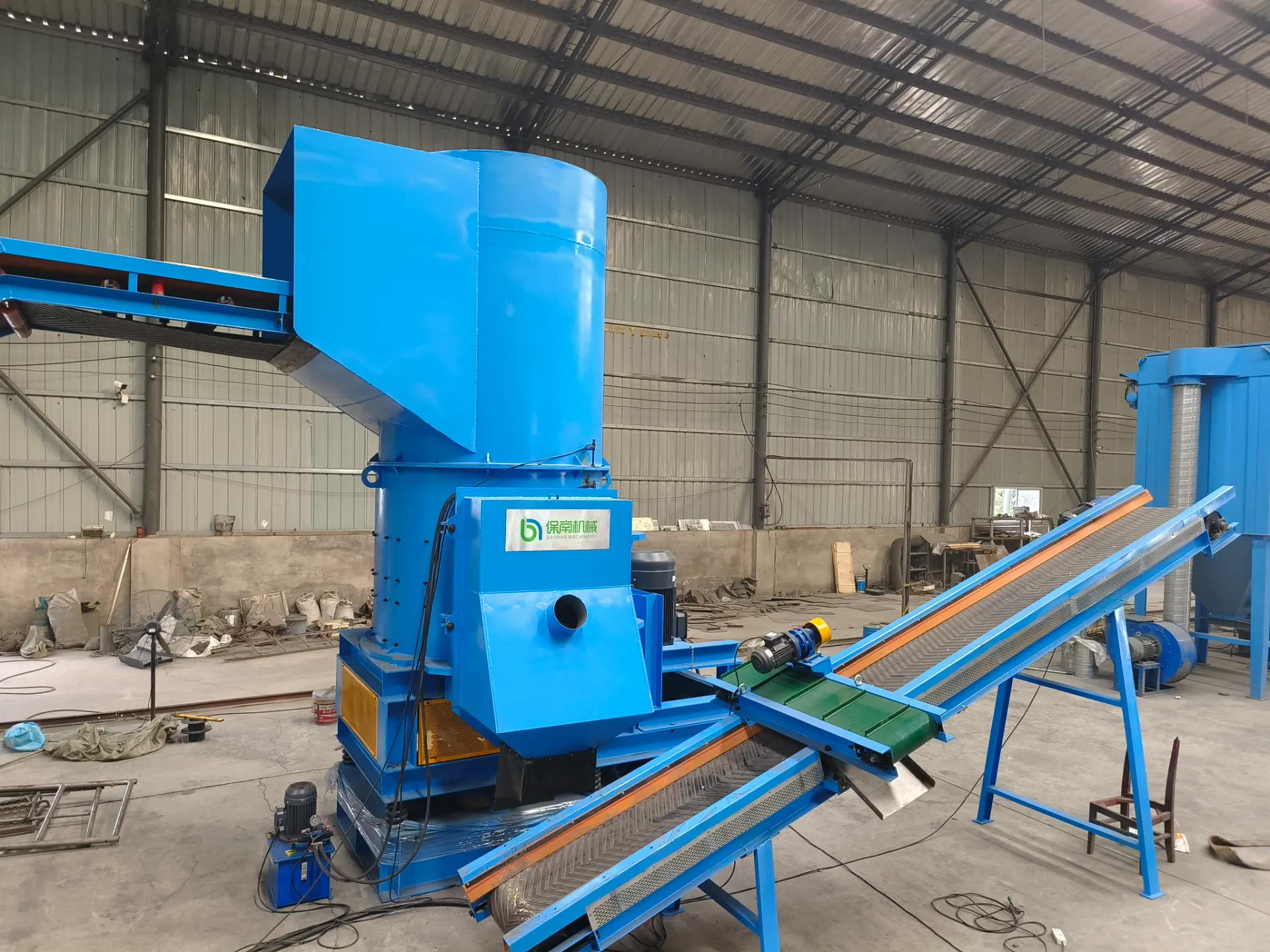The vertical shredder stands as a beacon of innovation in the competitive world of recycling technology. Unlike traditional horizontal shredders, which often struggle with bulky or difficult-to-process materials, vertical shredders offer unique advantages, particularly when it comes to versatility and efficiency. This article delves into the core aspects of vertical shredders, illustrating their pivotal role in modern recycling plants and their undeniable benefits that accentuate their dominance in the industry.

One of the remarkable qualities of vertical shredders is their ability to handle a vast array of materials effectively. From metals and plastics to e-waste, these machines can process diverse materials, thanks to their robust design and powerful operational framework. The vertical shredding mechanism, involving gravity-assisted feeding, allows materials to be broken down with less energy, making the process more energy-efficient compared to horizontal models. This energy efficiency translates into lower operational costs, a critical factor for businesses aiming to maximize their return on investment.
In terms of expertise, vertical shredders are engineered with state-of-the-art technology that emphasizes durability and operational longevity. The wear-resistant components are designed to withstand high-volume shredding over extended periods, reducing maintenance frequency and associated costs. Furthermore, advanced automation features ensure that these shredders operate with minimal manual intervention, mitigating the risk of operational errors while boosting productivity.

Authoritativeness in vertical shredders is evident in their widespread adoption across leading recycling facilities worldwide. Major industry players endorse these machines for their precision, reliability, and unmatched capacity to enhance recycling efficiency. Vertical shredders are regarded as industry benchmarks, setting standards for processing and ensuring that end materials are suitably prepared for further recycling stages or disposal.
vertical shredder
The trustworthiness of vertical shredders is consistently demonstrated through their track record of safety, precision, and environmental responsibility. Equipped with enhanced safety features, these machines prioritize operator safety, minimizing the risk of accidents. Environmental sustainability is also a cornerstone of vertical shredder design. The efficient processing cycle reduces landfill waste, contributing to environmental conservation initiatives and supporting global sustainability goals.
In practical experiential terms, operators report significant improvements in workflow and output quality when using vertical shredders. The intuitive user interface simplifies operational procedures, allowing users to adjust settings and monitor processing effortlessly. This ease of use ensures that facilities, regardless of size, can integrate vertical shredders into their processes without extensive training or adjustment periods.
Moreover, customer testimonials and case studies provide compelling evidence of the transformative impact of vertical shredders. Businesses have consistently recorded increases in processing volume and quality, underscoring the reliability and effectiveness of these machines. The scalability of operations facilitated by vertical shredders enables organizations to adapt swiftly to changing market demands, ensuring they remain competitive and responsive.
In conclusion,
vertical shredders represent a significant leap forward in recycling technology. Their blend of innovation, efficiency, durability, and eco-friendliness establishes them as an indispensable asset in any recycling operation. As industries continue to evolve, embracing environmentally sustainable practices, the vertical shredder stands ready to lead the way, offering unparalleled benefits that resonate with modern business needs and ethical standards.


